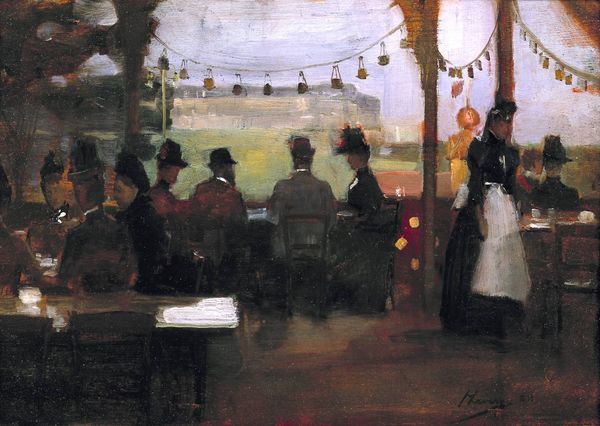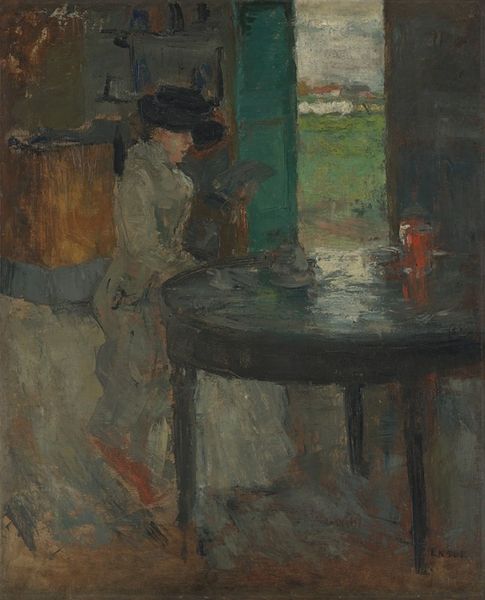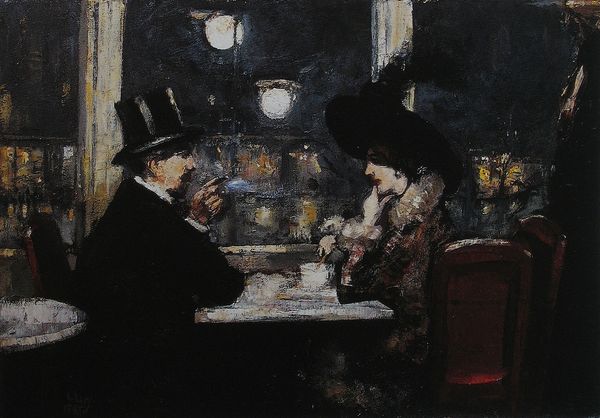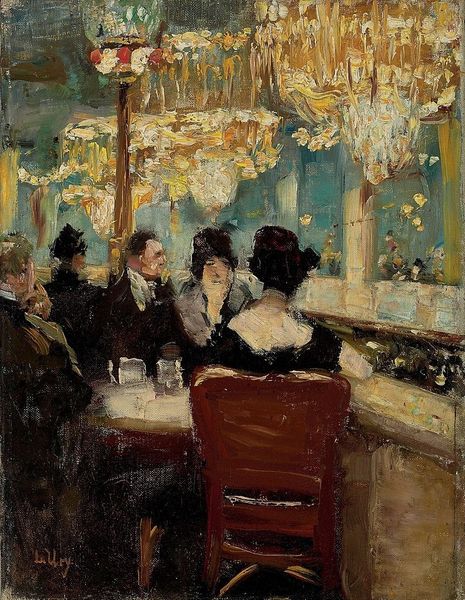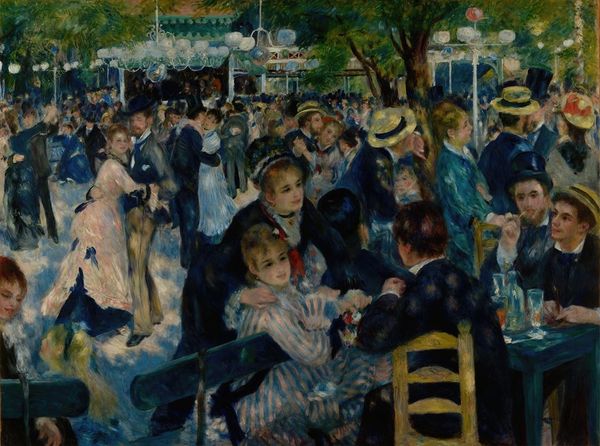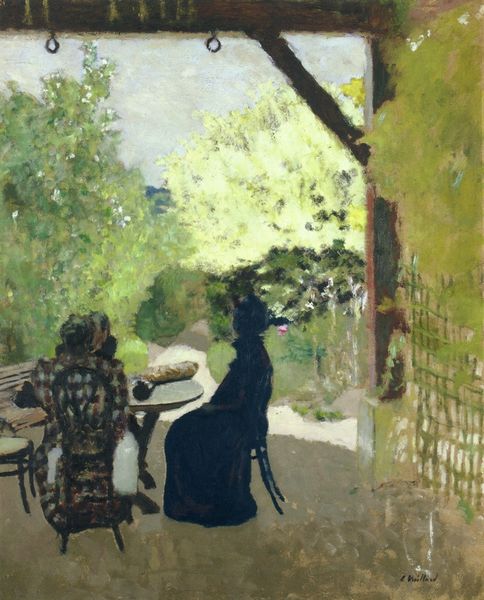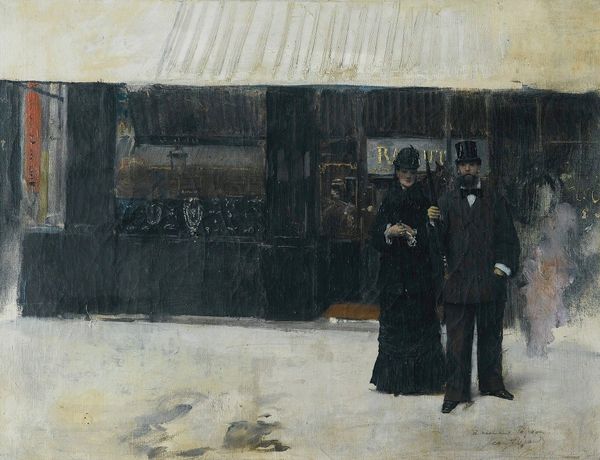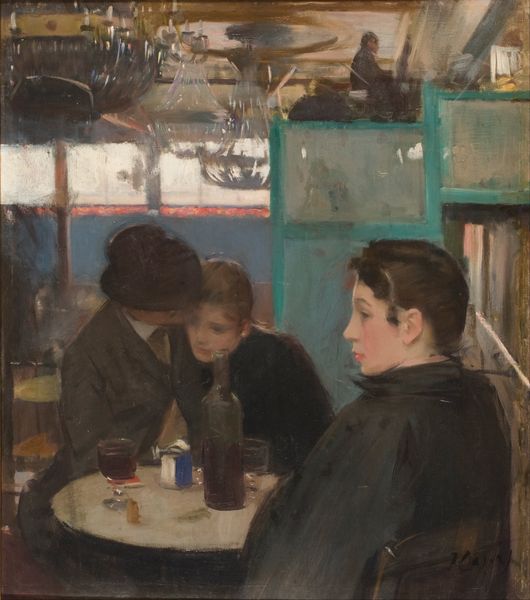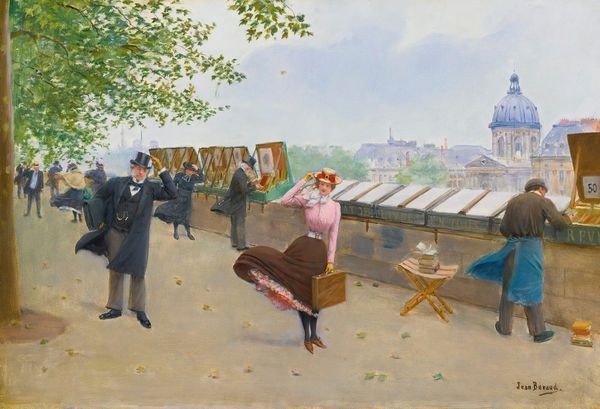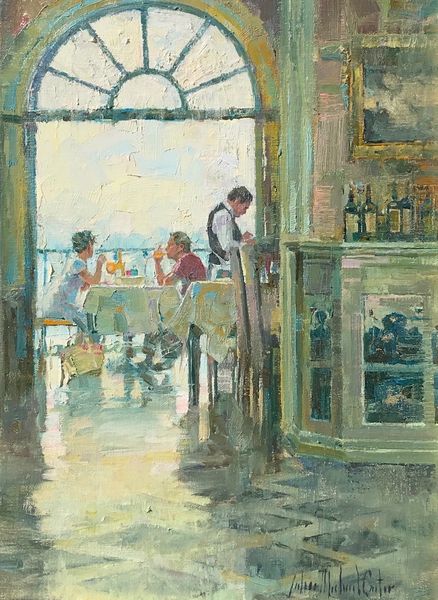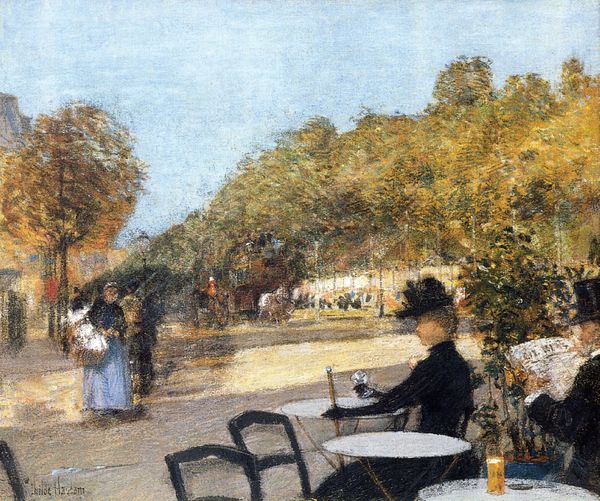
plein-air, oil-paint
#
portrait
#
gouache
#
impressionism
#
plein-air
#
oil-paint
#
landscape
#
figuration
#
oil painting
#
cityscape
#
genre-painting
#
modernism
Copyright: Public Domain: Artvee
Ramón Casas made this painting, titled "Plein Air," likely in the late 19th century. It captures a woman seated at an outdoor cafe, with a windmill visible in the background. Here, Casas engages with the then-fashionable concept of "plein air" painting, or painting outdoors, a practice closely linked to Impressionism. However, unlike the fleeting impressions of light favored by many Impressionists, Casas’ scene suggests a more studied and deliberate approach. The woman, presumably middle or upper class, occupies a carefully arranged space that hints at the commodification of leisure. The windmill, now a backdrop for leisure, was once a symbol of labor and rural life. To fully understand this piece, one could research the rise of outdoor cafes in late 19th-century Europe and the changing social dynamics they represented. Analyzing the brushwork and composition in comparison to other "plein air" painters could also shed light on Casas' unique artistic vision, as well as the institutional forces that shaped this vision. In short, this painting freezes a moment of social transformation, inviting us to consider the public role of art in documenting and shaping modern life.
Comments
No comments
Be the first to comment and join the conversation on the ultimate creative platform.
